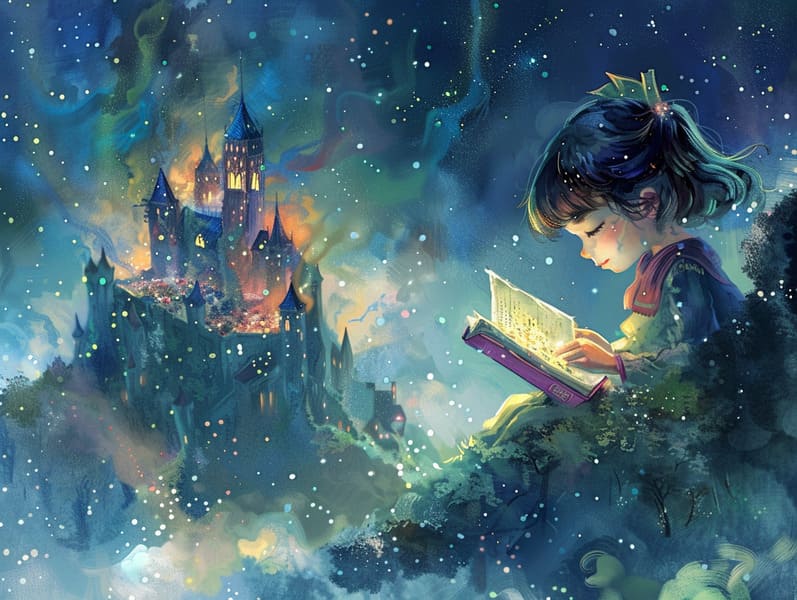The Birth of Fairy Tales to Read and Their Unfading Spell.
The Birth of Fairy Tales to Read and Their Unfading Spell.
Blog Article

Fairy tales for kids have enduring presence. These stories have been whispered from one generation to the next long before they were ever recorded. They emerged from a variety of traditions, including American traditions. They were initially transmitted among mature audiences, often carrying themes and messages related to the societal norms and beliefs of the time.
The renowned Brothers Grimm, the two Grimm brothers, were among the first to compile many of these beloved tales. Their compilation, "Grimm's Folk Tales," included narratives like "Cinderella," "The Story of Hansel and Gretel," and "Snow White," which have since become essentials in the world of children's fairy tales. Similarly, Hans Andersen's delightful stories, such as "The Mermaid's Tale," and "The Little Duckling," have floated into hearts worldwide, solidifying their place in the pantheon of treasured fairy tales.
Despite their age, fairy tales remain as meaningful as ever, especially as nighttime stories for kids. These whimsical stories are now available in different formats, including artistically illustrated books, charming animations, and digital fairy tales.
Their lasting presence can be traced to several charming aspects:
Moral Lessons: Classic fairy tales often offer important moral lessons. Fairy tales like "The Boy Who Cried Wolf" teach the virtue of honesty, while "The Race of the Tortoise and the Hare" stress the traits of perseverance and meekness. These tales offer kids clear distinctions between good and bad, molding their moral compass in a soft yet significant way.
Sympathy and Perception: Ancient fairy tales frequently depict individuals facing struggles and tests, stimulating kids to connect with their struggles and root for their triumphs. For instance, "The Story of Beauty and the Beast" shows us the importance of seeing beyond looks to understand the true essence of a individual, strengthening empathy and awareness.
Cultural Perception: Many traditional fairy tales are infused with the cultural contexts from which they blossomed. Understanding these tales can provide delightful insights into different historical contexts, cultivating a sense of global awareness and respect.
Imagination and Innovation: The extraordinary elements in timeless fairy tales—talking beasts—fire up children’s fantasies. These stories bring readers to otherworldly realms, unleashing innovative thinking and a sense of mystery that endures a lifetime.
Old fairy tales are not only entrancing but also enlightening. They act as delightful tools in developing various thinking and feeling skills in the young. When ancient fairy tales are voiced, they promote speaking abilities by bringing new phrases and complex sentence structures. This practice also improves listening abilities and attentiveness, as young ones pay close attention, prepared to see what happens next.
Furthermore, analyzing the themes and characters of ancient fairy tales can foster problem-solving abilities and evaluative skills. Children are instructed to detect patterns, expect results, and catch on to cause and effect. These discussions also promote young readers articulate their thoughts and feelings, advancing their emotional intelligence.
In today’s cyber age, the availability of online storybooks has made these fairy tales more attainable than ever. click here Online resources and applications give large libraries of famous fairy tales that can be perused or played anytime, anywhere. Fairy tales told out loud are particularly common, giving an fun way for young ones to appreciate these whimsical stories. Narrated books and read-out-loud stories move characters and settings to life, often supplemented by entrancing music and music that elevate the narrative adventure.
The everlasting appeal of timeless fairy tales lies in their ability to adapt to modern days while continuing with their main lessons. Contemporary reinterpretations of these tales often feature more different protagonists and modern settings, making them relevant to today’s audience. However, the key lessons of daring, benevolence, and lawfulness remain unchanged, continuing to affect listeners of all ages.
Fairy tales also offer a sense of serenity and knowability. They confer a systematic narrative with a distinct beginning, middle, and end, often finishing with the closure of conflicts and the triumph of justice over injustice. This certainty can be consoling for kids, affording a sense of invariability in an dynamic world.
Ancient fairy tales continue to mesmerize and teach new generations, maintaining their wonder and value in modern society. As children's bedtime stories, they render accessible a perfect blend of delight and instruction, advancing moral values, empathy, and creativity. The proliferation of online storybooks and the popularity of fairy tales narrated guarantee that these classic fairy tales remain available to new generations.
By defending and communicating these narratives, we continue to admire the rich tapestry of mythology and cultural heritage. Whether you are browsing a vibrantly illustrated book, delving into a electronic collection, or playing an narrated book, the fascination of popular fairy tales is always within reach. These fairy tales reveal of the persistent influence of storytelling and its ability to bind us across generations and cultures.
Be it you are experiencing a vibrantly illustrated book, browsing a cyber library, or hearing an audiobook, the beauty of bedtime fairy tales is always within reach.
These tales show us of the eternal power of fairy tales and its ability to tie us across centuries and lands, casting a charm that delights and instructs alike.